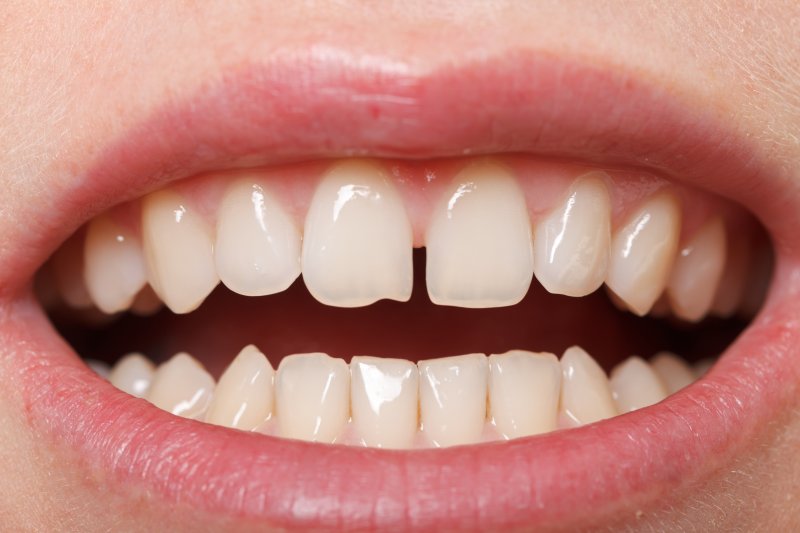What Is a Diastema and What Can You Do About Them?
April 29, 2021

Do you have a noticeable space between your front teeth? This is what dentists call a “diastema.” The good news is that you don’t need to worry. Most of the time, this isn’t harmful and doesn’t require any treatment. However, many people don’t like the appearance of a gap between their front teeth. Continue reading to learn why this occurs and what you can do about it.
What Causes a Diastema?
There are several reasons why a diastema can occur. Here are a few of the most common ones:
- Small teeth: In some families, having smaller teeth in relation to the jawbone is genetic. In this situation, spaces can develop.
- Gum disease: If you have gum disease at a more advanced stage, your teeth can migrate, and gaps can open between them. Without treatment, your teeth could eventually fall out.
- Missing teeth: When a tooth is missing, your other teeth will move around, and you could develop spaces. This happens more often when the teeth on either side of the front teeth are missing.
- Oversized labial frenum: The labial frenum is the tissue that extends from the inside of your upper lip to the gum that is above your upper front teeth. If this is larger than average, a gap can form.
- Bad habits: If you sucked your thumb, lip, or thrust your tongue as a child, you can develop a diastema as a result.
What Can You Do About a Diastema?
Fortunately, if you aren’t happy with the appearance of your smile, you don’t need to settle for it. Here are some possible treatments that may be able to give you that aesthetically beautiful smile that you’re looking for:
- Invisalign: Invisalign clear aligners can shift your teeth and close the gap.
- Porcelain veneers: If undersized teeth are the reason why you have a diastema, veneers can correct this. These are wafer-thin shells of porcelain that are placed over the surface of your teeth to cover up imperfections, such as diastemas.
- Direct bonding: Your dentist uses a composite resin on the surface of the teeth to fill in the gap. This is then hardened with the use of a special light.
- Periodontal therapy: If you have gum disease, having periodontal therapy is necessary in order to stop the infection and prevent further issues. After this, you and your dentist can work on closing the gap with another treatment.
- Laser treatment: Another possible treatment is through the use of a laser. The laser will shrink or remove excess tissue between the teeth. Afterwards, another treatment can be used to minimize the space between the teeth.
- Surgery: If you have a diastema as a result of an oversized labial frenum, surgery might be recommended to fix it. Another treatment may be used afterwards to repair the gap.
Diastemas aren’t usually harmful, but not everyone is a fan of their appearance. By discussing your options with your dentist, you’ll have the smile of your dreams in no time!
About the Author
Dr. James T. Sierra is an experienced dentist who has been working in the field for well over a decade. He earned his dental doctorate from the University of Texas Health Science Center at San Antonio and has completed over 1,200 hours of continuing education. He is a Fellow of the Academy of General Dentistry and the International Congress of Oral Implantologists. Currently, he is also a proud member of the American Academy of Cosmetic Dentistry. For more information on diastemas or to schedule an appointment at his office in Friendswood, visit his website or call (281) 482-2631.
No Comments
No comments yet.
RSS feed for comments on this post.
Sorry, the comment form is closed at this time.

 Check-Ups
Check-Ups Dental
Dental 3-on-6™
3-on-6™ Cerec® Same-Day
Cerec® Same-Day Full Mouth
Full Mouth Invisalign®
Invisalign® Cosmetic
Cosmetic Sedation
Sedation